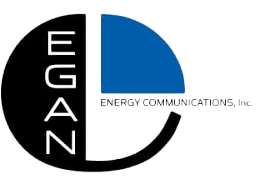Whatever utility communicators are selling these days, it doesn’t look like customers are buying. And we expect the problem will get worse before it gets better.
A lot of utility communication plans are tied to rate cases, and utilities are filing a lot of rate cases these days. It looks like 100 or more rate cases will be filed across the nation this year. The numbers were similar for 2010 and 2011.
For gas utilities, many of these rate cases are to lower prices, given the plummeting cost of natural gas. But for electric and combination utilities, even those that rely heavily on natural gas to generate electricity, the trend is in the opposite direction: rising prices, largely driven by stiff new environmental regulations. “We’re looking at annual price increases for nearly a decade,” was the gloomy prediction of one utility communicator.
Utility communicators invest a lot of time and effort developing and implementing rate-case communications. It’s one of the most important things they do: planning and implementing a communications strategy and preparing the materials — press releases, fact sheets, FAQs, talking points, public meetings, customer alerts, and employee communications — to achieve the company’s communications goals.
Utility rate-case communications materials are full of facts, such as:
- environmental regulation of power plants
- changing price of natural gas
- cost per kilowatt-hour or therm
- percentage change in the monthly bill
- construction of renewable energy generation
- rising cost of labor and materials
Facts are never in short supply. But managing customer perceptions is another story. Utility communicators often struggle when they try to convince customers they are receiving greater value for the increased cost they are paying.
This is borne out in the annual J.D. Power and Associates utility customer satisfaction (CSAT) surveys. One of the more significant components of a utility’s CSAT score is its customer’s perception of value received for the price paid.
Among residential customers of U.S. electric utilities, the so-called price/value ratio has dropped by about 14% over the last decade (see chart). The scale is 100 to 1000, so the data show that decline doesn’t start from a particularly high point.
Because most customers consider “price” as synonymous with “utility bill,” and because there will be several forces pushing up utility prices (and utility bills) for the next few years, the pressure will be on utility communicators to show their companies are providing increased value to customers that offsets the rising bills.
One utility communicator told me, “If we can show that value is rising faster than prices, we’ll be OK.” This is easier said than done. Many, perhaps most, utilities have broadened their range of programs and services in recent years. But the J.D. Power data shows that residential electric customers still feel the price they pay is rising faster than the value they receive.
EEC has shared some tips for how utilities can make energy real to their customers.
- All of those tips stem from a utility’s public-service mission.
- All of these tips can build high-quality bridges to customers.
- All of these tips will increase the perceived value of your utility service.
Category leaders like Apple, Starbucks, Amazon.com, Toyota, and FedEx don’t focus on facts. They deliver meaningful experiences that provide value to customers. We urge utilities to better understand and emulate the way these category leaders interact with their customers.
Utilities know there’s no short-cut to building a new generator. There’s an orderly process, an understanding of inputs and outputs, and a distinct timetable.
Building better relations with customers is no different than building a power plant. But while most electric utilities have mastered the art and science of building power plants, relatively few have been able to transfer (or build) that expertise in their communications function. Some utilities get it: they understand what customers’ value and use those insights to show they are providing greater value. Many utilities are on that road, but they haven’t arrived yet. A few have yet to get out of the starting gate.
But because the next few years will see near-annual rate-case filings, we can look forward to a future filled with “learning opportunities.”


